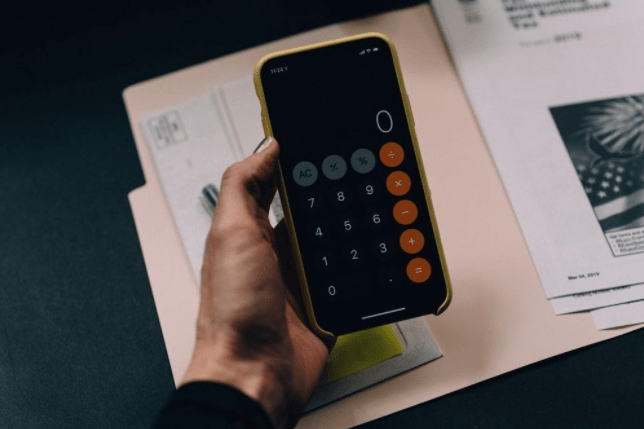Carelessness about finances turns into debt and paycheck-to-paycheck survival.
How to improve your financial situation and gain a sense of security with the help of modern web services, read this article to find out.
Young people from 20 to 30 years old are most often careless about finances.
We earn a living, spend on our needs, entertainment and hobbies, but we do not even think about the rational use of money, about our budget, or about the possibility of investing.
It doesn’t matter how much you earn, because investing and calculating your budget is a different relationship to money, and quantity has nothing to do with it.
This article is about how to manage your finances if you get a stable salary and rarely have an income on the side.
Below you will find a description of the strategy that works perfectly even with very modest salaries, as well as several tools that will help you manage your finances more conveniently.

Step 1. Create an Account in The Program for The Accounting of Finances
Many people are obsessed with the convenient app Mint.com where you can track all your financial transactions.
When registering, the user enters the bank card data, after which they can use the service to monitor all their income and expenses, plan a budget, receive tips on cost optimization and notifications about exceeding interest on loans.
There are several other apps where you can keep your budget, record and plan all expenses, and receive notifications about planned payments.
I found several free apps for accounting for finances or, in other words, conducting home accounting.
Easy Finances
Immediately after registration, you fill out a small questionnaire, the data from which will be useful for creating a list of categories and basic recommendations.
There you are immediately informed about the “airbag”, which is a desirable amount of money to be accumulated shortly.
You can sync your account with bank cards of various banks, and upload transactions directly.
Besides, there are indicators of the financial condition, according to which the app will automatically give you hints about the management of finances.
Home Money
This app is VERY simple.
There are no large analytical capabilities (there is an analysis of the annual cash flow) and synchronization with banks, but you do not need to understand anything at all.
The service gives you an initial briefing, you make your first transactions, and voila!
Create a budget, set goals for saving (there are already ready-made goals like a vacation or “airbag”, one-click — the goal is added), add income and expenses
Step 2. Create a Budget
The first thing to do after creating your account is to plan your budget.
If you work full time, you probably get a salary twice a month and all taxes have already been deducted from it.
So just specify the amount of salary.
Then add to your budget all recurring expenses for the month, such as rent, travel, internet, and so on.
This can be loan debts, child care, the amount that you must give to elderly parents, and other expenses that are repeated from month to month.
Now you can see a graph of your budget: how much you plan to spend on different categories, how much you have already spent, and how much you can spend more without going out of budget.
You can create a separate category “Everything else” or “Just in case”.
It will store money that you did not plan to spend according to your budget.
This way you will have a more accurate idea of how much money is available in case of unforeseen circumstances.
Step 3. Consider Debts
With budget planning, it is much more convenient to use credit cards for that non-cash period when you have already spent your last salary, and the next salary has not yet arrived.
The app specifies how much money you owe and by what date you need to pay.
So you will not forget to make a payment, and you will not have to pay interest.
In Easy Finance, a special feature is used for this purpose — automatic entry of payment dates in Google Calendar, as well as reminders by email and SMS.
Step 4. Setting Goals for Accumulation
So, you set a budget, and your expenses for the month remain within this budget.
Great, it’s time to think about savings.
You can configure the service you use so that each month a certain amount is transferred as savings to your account.
A great goal to accumulate is a “security” account.
Such an account will provide you with what money should provide security.
It is up to you to decide how large your savings will be, but most often it is recommended to allocate the amount that in the event of an emergency will be enough for six months of living without work.
If you have been doing home accounting for several months, it will be quite simple to do this: take your average actual budget for the month and multiply the figure by six.
When this amount accumulates, do not use it until the most extreme case occurs, such as the fact that you will be left without a job, car, or housing.
You’ll see, with a reserve of money “just in case” you will feel much more comfortable, calmer, and more confident.
You can also set other goals for accumulation.
This can be different purchases, large or not so large, a “vacation fund” with savings for the upcoming vacation, or something else.
If you calculate your budget, you will be able to clearly understand how much money you can save for a thing, event, or vacation each month.
The above recommendations are of great use to students who only start making money and plan the budget.
Knowing how to deal with money makes students feel more confident about the future.
As a result, it becomes easier for students to focus on their studies, like academic writing or else.
If they are still struggling with essay writing, they can get help from a professional essay writer.



